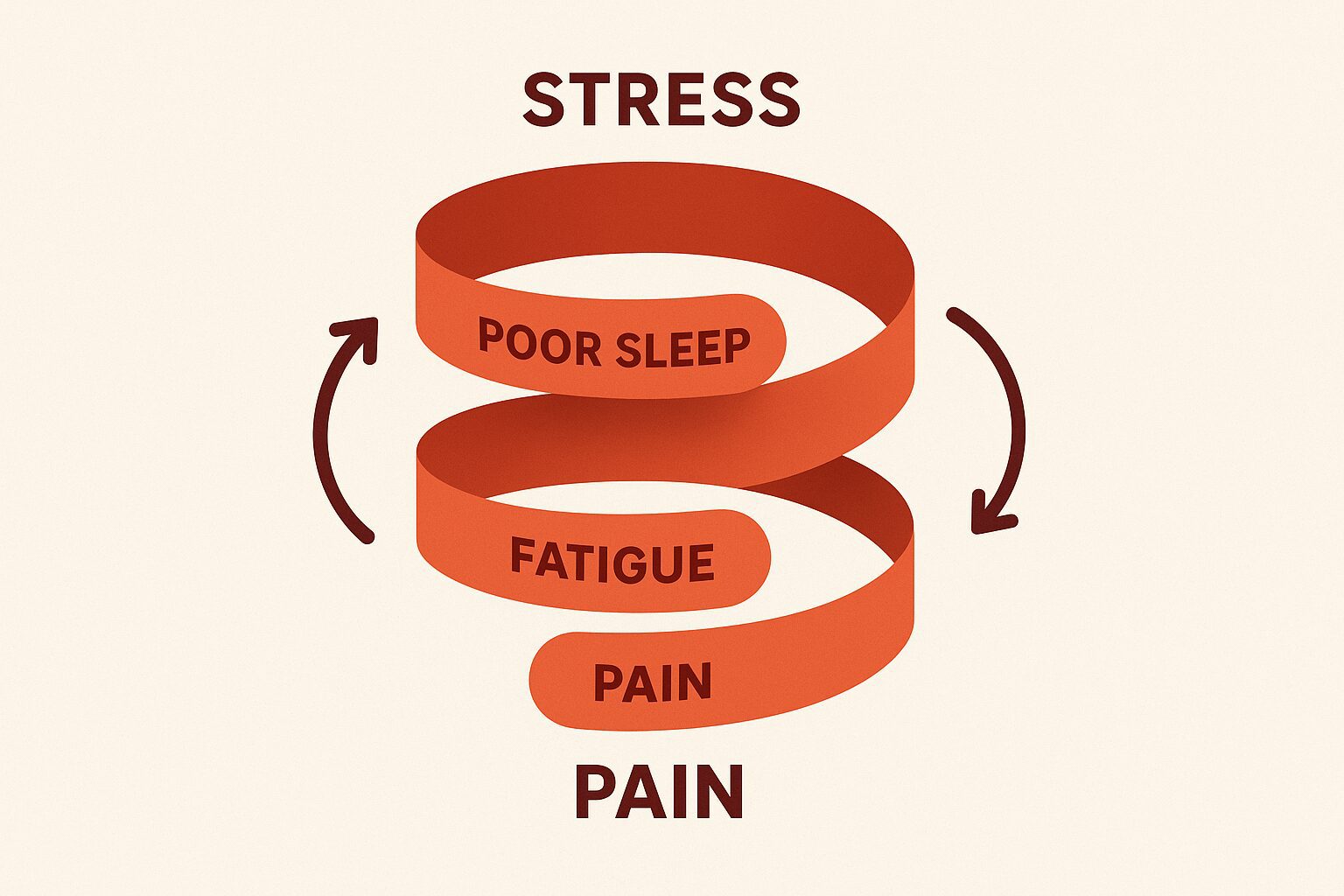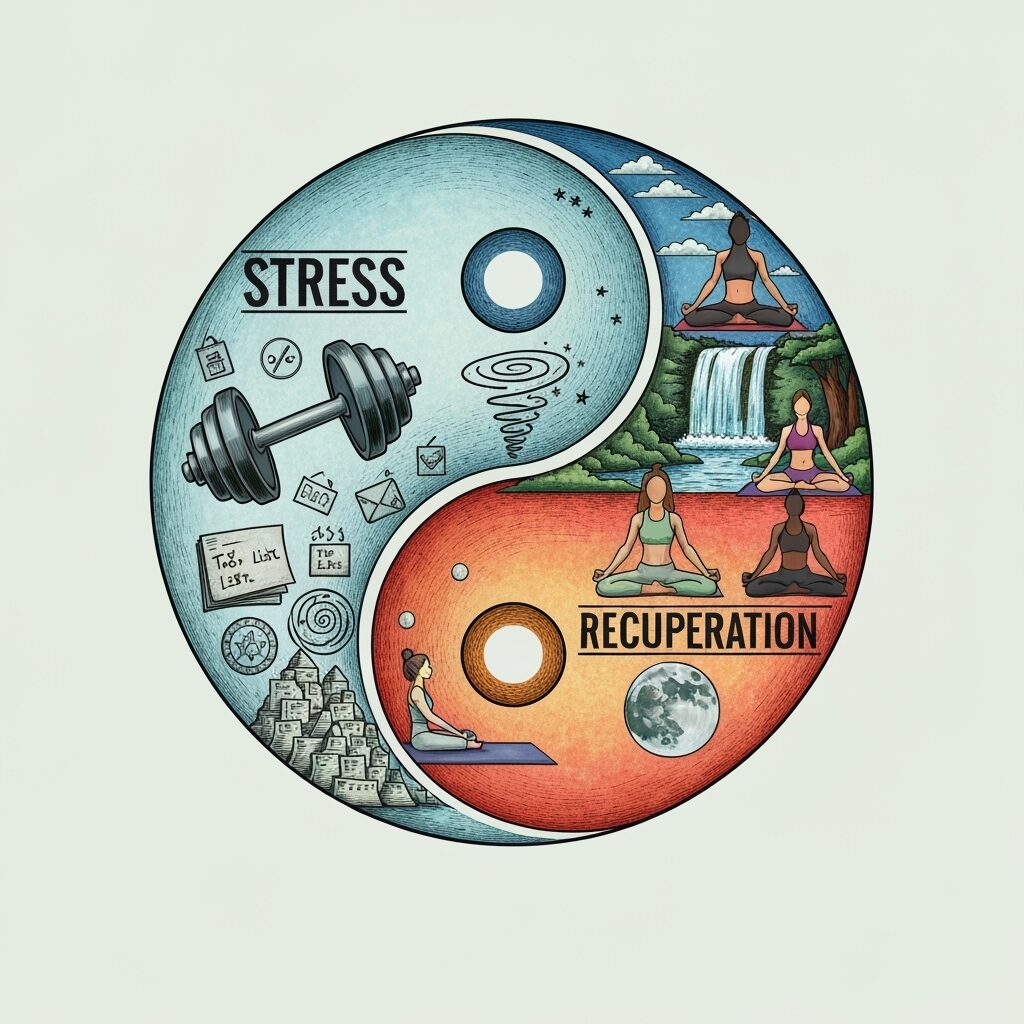Understanding Recuperation for Strength, Wellness and Healing
You have pain that doesn’t respond to reasonable measures. You’re working out but not getting results. You’re tired and stressed and your sleep has become poor- and you’re trapped in a spiral. What do these things have in common? Failure to recuperate. In the early stages, eating better and getting some rest can be enough. But if you’re overwhelmed long enough, getting normal again can be elusive. Lasting recuperation and healing require broad vision coupled with focused expertise. Chiropractic adjustments can be an important part of recovery. The old-timers said that a person that needed to be adjusted had dis-ease, and they were right. The person that gets adjusted rises to the next level – staying adjusted – when we together master recuperation. This takes many forms and can vary considerably from person to person.

Tools That Support the Healing Journey
There are several reliable resources that fill the toolbox for the person on their healing and recovery journey. Looking at what we have said about important care topics can shed more light on the details of these devices.
– Read our cryotherapy blog to see how cryotherapy can assist with recovery
– Explore our post on stress and healing to understand why it’s often overlooked in recovery
– Read about muscles that won’t heal to identify potential roadblocks in your recovery
– Explore our arthritis guide for comprehensive management strategies
– Read our post on chronic myofascial pain to better understand this complex condition
– Check out our NSAID article to understand the pros and cons of anti-inflammatory medications
– Learn about chiropractic care for radiculopathy and how it can provide relief
– Read our guide on staying adjusted to maintain your progress between visits
The Chiropractor’s Role in Whole-Body Wellness
When you come to a chiropractor you have not only come to the professional that is trained in joint-by-joint management of musculoskeletal disorders, but you will also have come to a portal of entry provider that is trained to identify organic disorders which might need medical referral. Identifying underlying considerations like dietary qualifications that can lead to oxidative stress, or a stress/recovery cycle failure which would demand that you start paying attention to your HRV for necessary insight could be the direction you find under the care of a Doctor with a wholistic viewpoint. Like many things, how much you get out of your time with the chiropractor will be a reflection of how much you’re willing to put into it.
– Read more about heart rate variability and how it can guide your healing process
Movement, Healing, and Recovery Go Hand in Hand
The common themes in almost all successful treatment plans include movement, healing and recovering functionality. Each of these feeds upon the other in order for the process to arrive at a stability that becomes lasting recovery. Ever since we realized that bedrest is catastrophic in the management of low back pain, the search has been on for that combination of care, conditioning and support that takes us to that special place of strength and wellness that can free us from pain.
Rising Above Pain Through Constructive Processes
This comes together for people every day in our clinic and the special ingredients that combine to make this happen include a willingness to face the reality of our dysfunction as well as embrace a constructive process where we rise above pain as its own reality and see that pain, in most cases, reflects other manageable disorders.
Balance Between Stress and Recuperation
A discussion that only looks at ways to improve recuperation is half of a discussion. The ancients were on to something when they looked at yin and yang and saw each as half of a whole. Work/recovery, stress/recuperation; each must happen as a reflection of the other. In an effort to see this in context let’s look at some classic cases.

The Jock
Exercise, conditioning and athleticisms are a fabulous part of a lifestyle that is healthy and strong. Anyone that is engaged in athletics for long has become accustomed to pain. Pain is an accepted element of the athletic lifestyle for many. At the heart of every conditioning program is the intentional exposure to stresses that are intended to lead to improved strength or conditioning. The reality, however, is that no one ever got bigger, faster or stronger from having worked out. The improvements that come from the workout only come when the body has adapted to the workout. Recuperation. Stress imposes adaptation. Healthy stress response leads to a supra-adaptation. If you can lift the weight 10 times today and you return to it having adapted correctly, you will be able to lift it 11 times on the next effort; this is the simplest picture of progressive resistance weight training. This applies to all conditioning efforts one way or another. Coming to understand your body’s needs for adaptation is part of the journey for every athlete. Failing to embrace this responsibility, sadly, leads to chronic injury instead of health and wellness in your old age.
The Desk Jockey
Prolonged sitting. It almost rises to the level of a public health crisis. “The cure to sitting is standing” is a correct statement in the context that keeping your body in motion is necessary for you to be well. We can be a little more particular, however, as we look at this from the reference point of the person that is presenting with pain. This discussion can encompass repetitive motion disorders as well. To remain in a seated position (or any static position) your body asks certain muscles to bear load and to do so in a way that defeats blood flow to these very muscles. Understanding that, and managing that by bringing in fresh horses as well as improving your body’s recuperation become successful navigation of these problems.
The Laborer
If you pull a chain hard enough, the chain will break. The point at which it breaks will be viewed as the weakest link. When a laborer comes to us with a pain complaint, the problem is almost never weakness. We don’t look for the weakest link, we look for the under recuperated link. These are almost never people that need more work in order to be stronger. They need to be more fully recuperated in order to be stronger in their work. Identifying the under recuperated link in the chain and then making amendments necessary to spare excessive burden, as well as optimize recovery, becomes key to successful long-term management and getting this person back to work.
When Healing Goes Wrong
If you need our care, it is not simply because you need us to help you heal. Many of the problems that we care for here are because of injuries that have already started to heal, and the healing process has gone poorly such that the disturbed healing is now part of the problem.
If you have pain that hasn’t resolved on its own, you almost certainly have a disorder that includes repair processes in your body that have gone wrong. Physiological repair is part of recuperation. For this to go well, certain parameters must be in place. Key among these is normalized motion which engenders normalized repairs. Without it you can have chronic pain that is sealed within the disturbed repair tissue.
The Power of Chiropractic Adjustments
The best chiropractic adjustments achieve a release. The release unleashes blood flow, joint motion, opportunity for fuller range in muscles, tendons and fascia as well as renewed connection between your mind and your body. It’s this grasp of restored motion and the expertise of the chiropractor to deliver it in a joint-by-joint manner that is the secret sauce of success in our clinic.
Taking the next step in your healing journey
Don’t let chronic pain or slow recovery hold you back. Our experienced chiropractic team in Grovetown is here to help restore motion, support your body’s repair processes, and guide you towards lasting wellness. Schedule your appointment today and start feeling the difference that expert care can make.
Written by: Donaid Seals D.C
Dr. Seals is a practicing Doctor of Chiropractic with over 25 years of experience caring for people. His thinking is the product of his education, practice experience and many years in the natural foods and fitness industry. He has become living proof that old muscleheads don’t die-or fade away; sometimes they grow up to bring real-world expertise to the clinical picture. Traditional background information is available here.